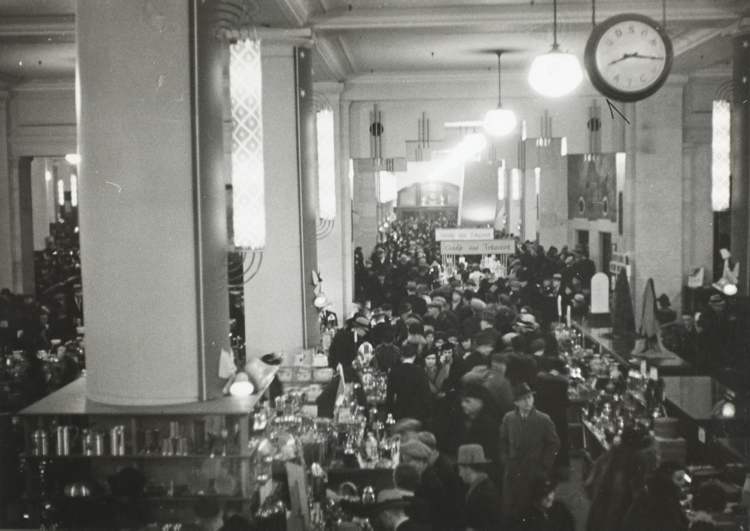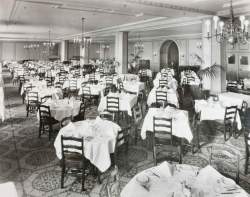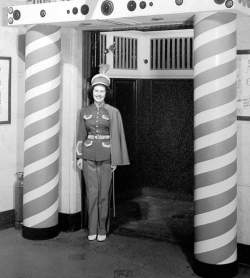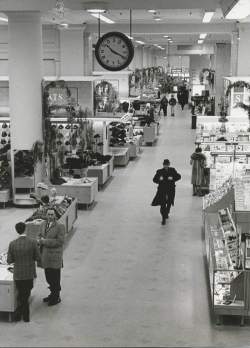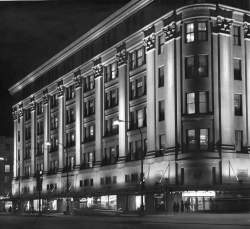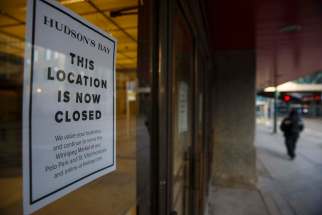‘Where do we go from here?’ What the Bay's closure means for the future of downtown retailers
Read this article for free:
or
Already have an account? Log in here »
To continue reading, please subscribe:
Monthly Digital Subscription
$0 for the first 4 weeks*
- Enjoy unlimited reading on winnipegfreepress.com
- Read the E-Edition, our digital replica newspaper
- Access News Break, our award-winning app
- Play interactive puzzles
*No charge for 4 weeks then price increases to the regular rate of $19.00 plus GST every four weeks. Offer available to new and qualified returning subscribers only. Cancel any time.
Monthly Digital Subscription
$4.75/week*
- Enjoy unlimited reading on winnipegfreepress.com
- Read the E-Edition, our digital replica newspaper
- Access News Break, our award-winning app
- Play interactive puzzles
*Billed as $19 plus GST every four weeks. Cancel any time.
To continue reading, please subscribe:
Add Free Press access to your Brandon Sun subscription for only an additional
$1 for the first 4 weeks*
*Your next subscription payment will increase by $1.00 and you will be charged $16.99 plus GST for four weeks. After four weeks, your payment will increase to $23.99 plus GST every four weeks.
Read unlimited articles for free today:
or
Already have an account? Log in here »
Hey there, time traveller!
This article was published 01/12/2020 (1839 days ago), so information in it may no longer be current.
What happens to the state of business in a city when it loses its largest storefront in the downtown core even earlier than expected?
It’s a question being mulled by commerce stakeholders and retail experts, along with the provincial and municipal government, as the COVID-19 pandemic forces the Hudson’s Bay Company to close its downtown Winnipeg location two months earlier than previously announced.
Hudson’s Bay Co. timeline
An overview of the Hudson’s Bay Co., from the 1670 signing of the Royal Charter, to early trading posts, through to changes in ownership and purchases of other companies, to today’s news of the downtown store closure.
1670 – The Hudson’s Bay Co., the world’s oldest continuously operating trading company, is born with the signing of the Royal Charter on May 2nd to Prince Rupert and “the Company of Adventurers of England trading into Hudson Bay.”
An overview of the Hudson’s Bay Co., from the 1670 signing of the Royal Charter, to early trading posts, through to changes in ownership and purchases of other companies, to today’s news of the downtown store closure.
1670 – The Hudson’s Bay Co., the world’s oldest continuously operating trading company, is born with the signing of the Royal Charter on May 2nd to Prince Rupert and “the Company of Adventurers of England trading into Hudson Bay.”
1821 – Hudson’s Bay Company and North West Company merge. At the time, HBC has 76 trading posts, NWC 97, with 1,983 employees.
1831 – Fort Garry is originally built in 1821 on a site near The Forks, where the Red and the Assiniboine rivers meet. A new fort, Lower Fort Garry is opened downstream in 1831. In 1835, HBC rebuilds the first fort in its original location and names it Upper Fort Garry.
1881 – Opens a modest dry goods, grocery, and hardware store at the corner of Winnipeg’s Main and York streets and produces its first mail order catalogue that provides access to the Canadian rural market.
1913 – Builds the first of its modern department stores in Calgary at the corner of 7th Avenue SW and 1st Street
1926 – Opens its Portage Avenue store in Winnipeg, the last of its six large urban stores
1965 – Adopts “the Bay” brand for retail
1970 – Queen Elizabeth grants the company a new charter and its head office moves from London, England, to Winnipeg. The year also marks the company’s 300th anniversary.
1974 – Establishes itself in the downtown core of Toronto with 260,000 sq. ft. of retail space and relocates its corporate office to Toronto.
1978 – Buys Zellers, Fields, and Simpsons the idea being for HBC to satisfy all potential customers through its three banners: Simpsons for the premium trade; The Bay for the middle market; and Zellers for the discount, mass market.
1987 – Officially moves its headquarters from Winnipeg to Toronto
1993 – The Bay acquires Woodward’s Department Stores and most of the company’s 26 stores are converted to Zellers or Bay stores. The net gain to HBC is 11 Bay stores and 10 Zellers stores in British Columbia and Alberta.
1998 – Zellers acquires Kmart Canada. Zellers now operates in 17 new Canadian markets and has a bigger presence in Canada than Walmart.
1999 – Launches Home Outfitters
2000 – Launches its web presence with www.hbc.com
2006 – Becomes a private U.S.-owned company when American Jerry Zucker acquires the company for $1.13 billion
2008 – National Realty and Development Corp. (NRDC) Equity Partners, which also owns the 47-store Lord & Taylor department store chain, buys HBC.
2011 – Sells Zellers leases to Target Corp., which acquires 220 leasehold interests for $1.825 billion. In 2012, HBC announces that the remaining Zellers stores will close by March 2013.
2012 – Returns to the public marketplace with an initial public offering of common shares.
2013 – Buys Saks Incorporated, which operates banners Saks Fifth Avenue and Saks OFF 5TH, for US $2.9 billion
2019 – After two decades of operation, HBC announces the closure of its Canadian Home Outfitters business in February.
2020 – Hudson’s Bay Co. shareholders voted overwhelmingly to approve the purchase of the company by executive chairman Richard Baker for $2 billion, talking it private once again.
2020 – Iconic Portage Avenue store in downtown Winnipeg closed at the end of November.
“In light of recent restrictions on non-essential retail by the Government of Manitoba, we have made the decision to close this location,” said HBC in a statement to the Free Press Tuesday. “We remain committed to working with partners to find opportunities for this historic location that will have a positive impact on the community.”
In October, the iconic Canadian departmental shopping chain had announced it would be shuttering the Winnipeg store permanently in February due to a “change in consumer behaviour.”
But by late Monday, a “closed” sign could be seen outside the mammoth, 650,000-square-foot store on Portage Avenue and Memorial Boulevard — one of the original six stores for the 350-year-old retailer before it expanded across North America.
Now, industry decision-makers and onlookers are scratching their heads about what comes next for the vacant building which has more square footage than almost all other buildings in the city.
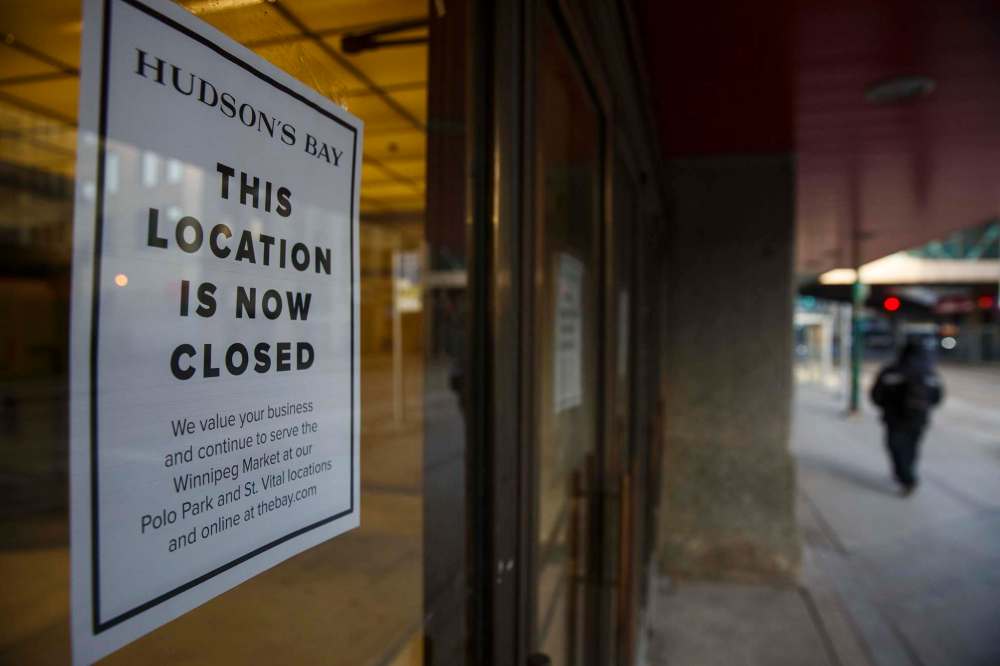
For some, it’s prime real estate smack dab at the heart of a city that’s presenting an “opportunity” for future growth. While for others, it’s a growing concern about the “sad state of affairs” for brick-and-mortar stores.
For almost all of them, however, a mixed-use occupancy that combines residential and commercial aspects appears to be the most sensible direction for the building.
“It’s definitely an important moment in time where we can truly shape what comes next for all our businesses in the provincial hub,” said Kate Fenske, chief executive officer of Downtown Winnipeg BIZ. “Of course, this closure does have an impact on several businesses nearby because of their proximity to that space and that’s something we need to prevent from escalating.”
Citing statistics from a study conducted by the advocacy and marketing group last week, Fenske said while business is deteriorating downtown, investment in the area continues to rise and so does the possibility of new residents moving in.
Upcoming capital projects underway have a combined construction value of nearly $1 billion, according to Downtown Winnipeg BIZ numbers, including the $400-million redevelopment of the Portage Place mall right across the Bay planned for March, 2021. And at least 18,000 people are expected to call the downtown core their home in the next two years.
“While it’s in no way surprising that the Bay chose to close, and it’s sad they’re closing even earlier than planned,” said Fenske in an interview, “how we go from here needs to use all that momentum that we still have going on here and use it for the future.”
No farewell tour for downtown Bay fans
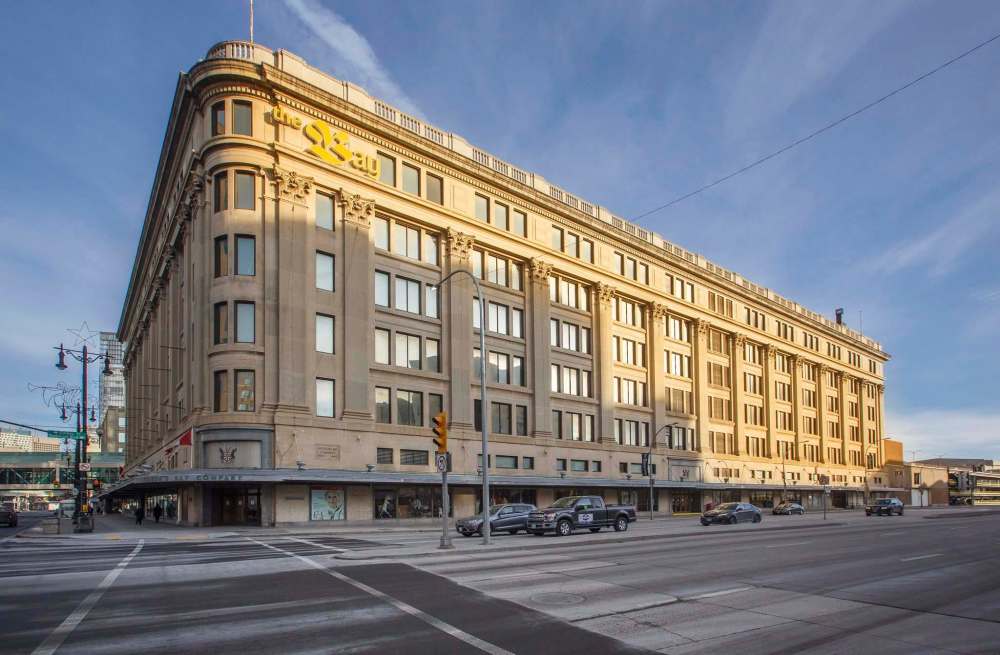
Posted:
The historic downtown Hudson’s Bay Co. building was locked to the public for good Sunday — and with it, those who’d hoped to say goodbye.
Lisa Hutcheson, managing partner at retail consulting firm J.C. Williams Group in Toronto, said that’s easier said than done.
“Retail shopping definitely works in clusters, I mean that’s the whole concept behind having a mall to begin with — to have several stores conveniently in one place,” she said Tuesday.
“But now the real question is, where do we go from here when that concept has itself become outdated and is causing closures like this? That’s difficult to answer.”
Hutcheson believes the novel coronavirus “only magnified and worsened the inevitable,” given the overall lack of foot traffic in suburban-style malls and an evolving shift to online commerce seen well before the pandemic.
“I do still think that if we found a good blend of mix-use purpose for the building, it would be of great value,” she said. “It’s just that that’s the type of project which is pretty difficult to convince someone to take on right now.”
“You’re likely looking at getting rid of the guts and almost a complete reimagination of the space for it to be successful.” – Dayna Spiring, president of Economic Development Winnipeg
Last year a company-wide valuation of HBC’s real estate holdings valued the downtown Winnipeg building at precisely $0. And over the years, the company has closed some of the store’s six floors along with its basement, consolidating stock on just two levels.
Dayna Spiring, president of Economic Development Winnipeg, said her conversations with the province and the city have given her ample reason to be optimistic.
“There’s so much potential here, it’s hard not to be hopeful about what can be done with that space especially with consultation from the community at large,” she said. “The opportunity is massive.”
In statements to the Free Press, provincial and municipal spokespersons said both government levels are open to hearing development proposals in the future that “include an adaptive re-use of the building and conservation of the character-defining elements.”
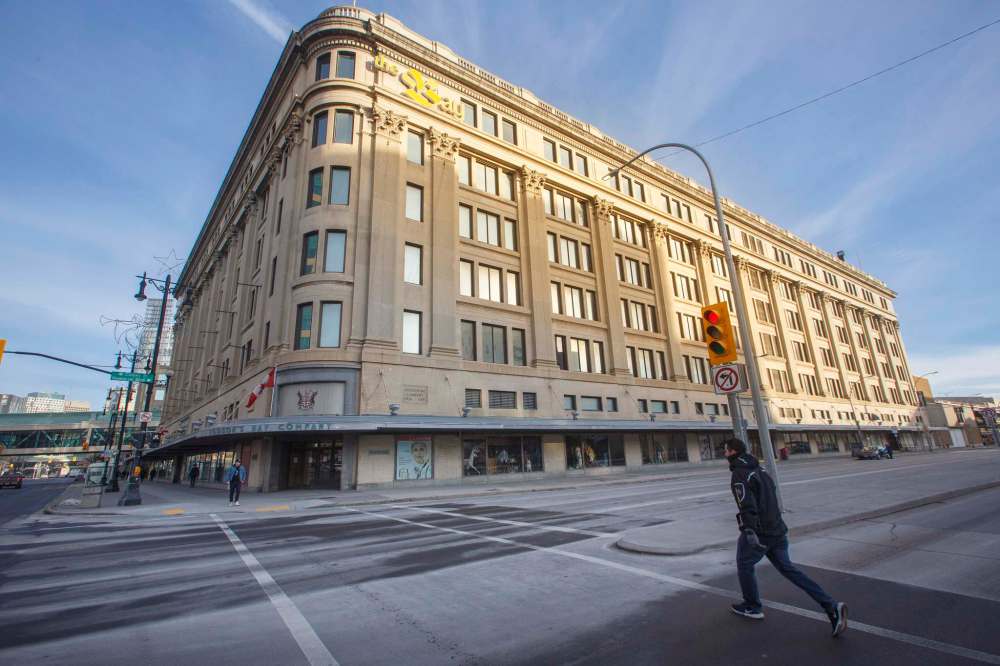
A city spokesperson said the mayor is “currently engaged in outreach with community stakeholders in this regard.”
But Spiring said she doesn’t believe the building will ever remain the way it is right now. “You’re likely looking at getting rid of the guts and almost a complete reimagination of the space for it to be successful,” she added.
“We just have to get through this pandemic first to make those kind of decisions.”
Hudson’s Bay Co. continues to serve Winnipeggers at its Polo Park and St. Vital locations, as well as online at thebay.com.
Twitter: @temurdur
Temur.Durrani@freepress.mb.ca

